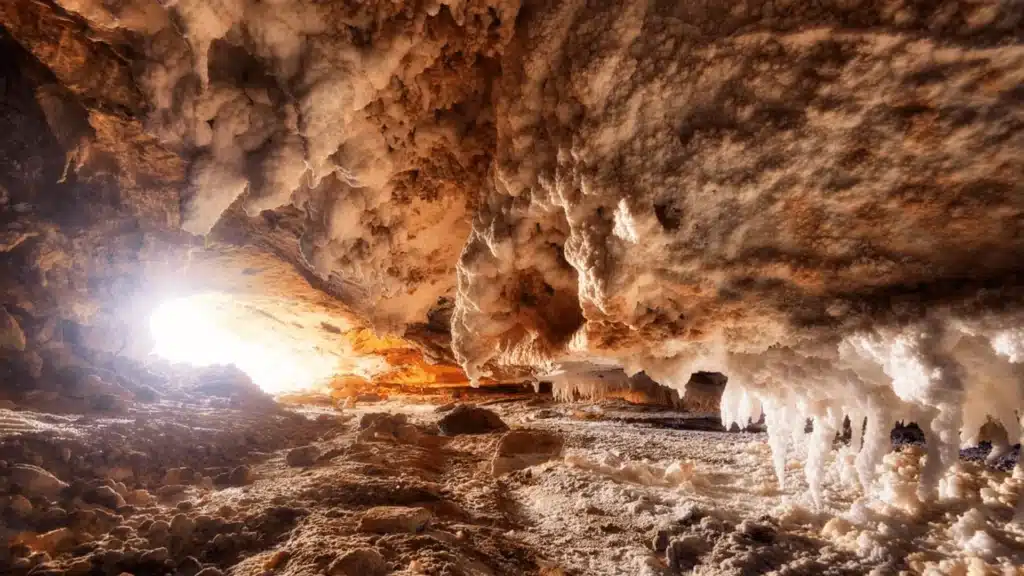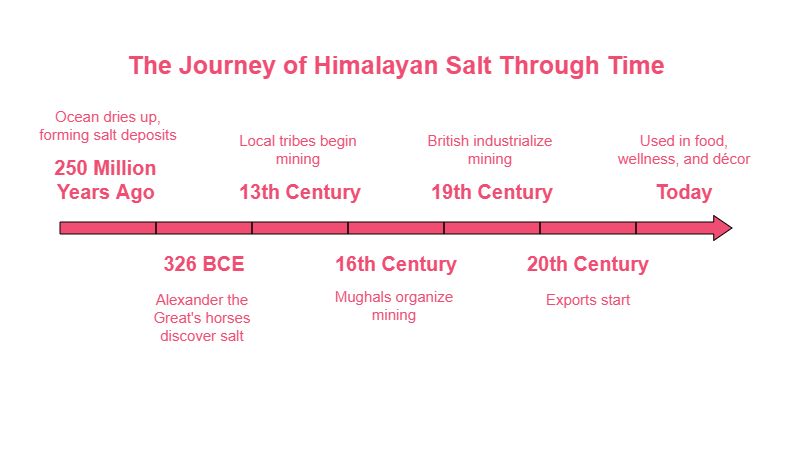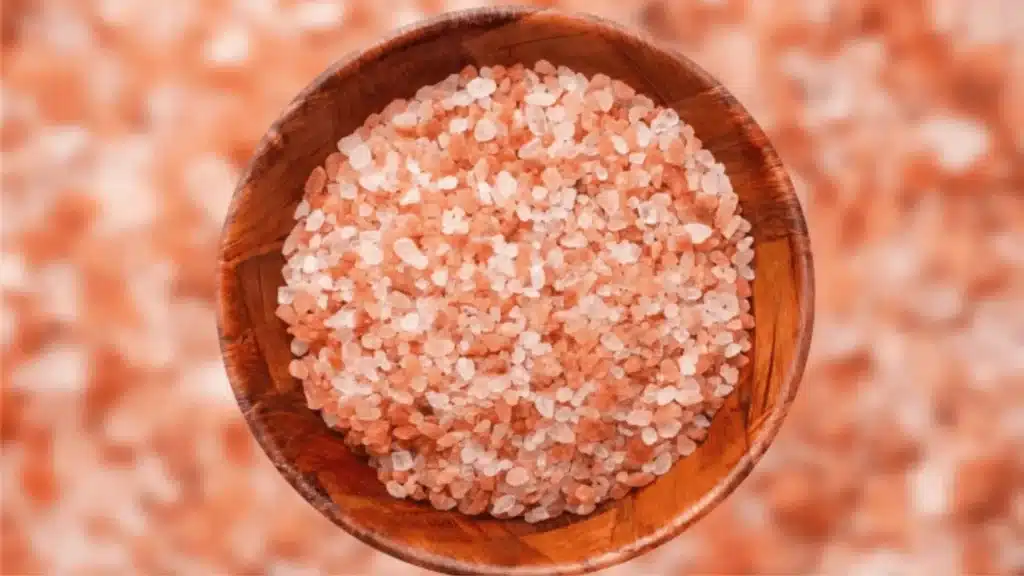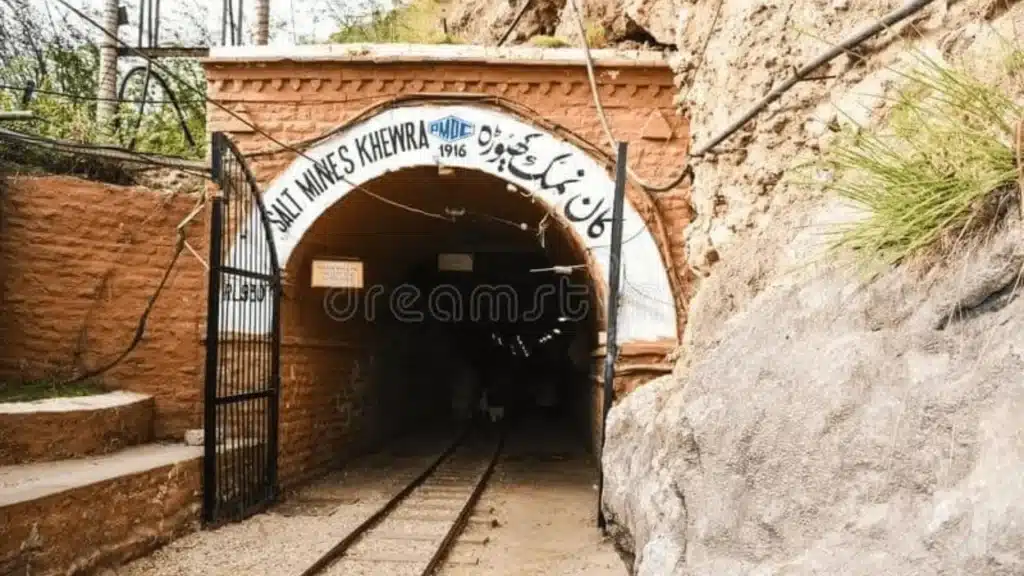The Fascinating Himalayan Salt History You Need to Know
- Zayan Rauf

When you hold a piece of pink Himalayan salt in your hand, it’s hard to imagine that it carries a story older than human civilization itself. These sparkling crystals are not just used to flavor food or decorate lamps, they are part of a history that goes back millions of years.
The Himalayan Salt History begins nearly 250 million years ago when an ancient sea slowly dried up, leaving behind thick layers of mineral-rich salt. Over time, these layers were buried under mountains and lava, sealing them away in complete purity. Today, we mine those very salt deposits from Pakistan’s famous Khewra Salt Mine, the heart of Himalayan pink salt.
But the history of Himalayan salt is more than just geology. From the time of Alexander the Great to the Mughal emperors, and from ancient trade caravans to modern wellness spas, Himalayan salt has always had an important place in human life. Let’s take a simple journey through its fascinating story.
Table of Contents
Did You Know?
The vibrant pink Himalayan salt we sprinkle on our meals began forming over 500 million years ago when ancient seas evaporated and left behind the stunning deposits we mine today. [1]
What Is Himalayan Salt?

Himalayan salt is a type of natural rock salt, mostly mined from the Khewra Salt Mine in Pakistan’s Punjab region. What makes it stand out is its pink color, which comes from tiny amounts of minerals like iron, calcium, magnesium, and potassium.
Explore: Why Is Himalayan Salt Pink
Unlike table salt, which is processed and stripped of most minerals, Himalayan salt stays close to its natural form. In fact, scientific analysis shows it’s 95–98% sodium chloride, enriched with trace minerals like calcium, magnesium, and iron that give it the rosy glow. [2]This is why many people call it the “purest salt on Earth.” In the bigger picture of Himalayan Salt History, it is unique because it was formed naturally millions of years ago, long before humans even existed.
Where Does Himalayan Salt Come From?

The story of Himalayan salt starts about 250 million years ago. Back then, there was a vast ocean in the region where the Himalayas stand today. Over time, the ocean dried up, leaving behind large salt deposits. Later, these salt beds were covered by rock and lava, protecting them from pollution and weather.
That’s why Himalayan salt is sometimes called “fossilized sea salt.” It doesn’t come from modern oceans but from ancient ones. This is also why it’s considered pure and untouched by modern-day impurities.
Today, almost all Himalayan pink salt is mined from the Salt Range mountains of Pakistan, especially the Khewra Salt Mine, which spans 3,398 acres and is the second-largest salt mine in the world. First noticed around 326 BCE when Alexander’s horses licked its salty rocks, it remains the heart of Himalayan salt mining. [3]
Timeline of Himalayan Salt History
Here’s a simple timeline to understand its journey:
Period | Event | Importance |
250 Million Years Ago | Ocean dries up → Salt deposits form | Birth of Himalayan salt |
326 BCE | Alexander the Great’s horses lick salty rocks | Discovery of Khewra salt by humans |
13th Century | Local tribes start mining | Salt becomes part of local trade |
16th Century (Mughal Era) | Mughals organize mining | Used in royal kitchens and trade routes |
19th Century (Sikh & British Rule) | Mines industrialized | Large-scale mining begins |
20th Century | Exports start | Salt spreads worldwide |
Today | Used in food, wellness & décor | Himalayan salt is a global trend |
Legends of Discovery
One of the most famous legends about Himalayan Salt History is connected to Alexander the Great. Around 326 BCE, when his army was passing through the region, soldiers noticed their horses licking the rocks. This led them to discover the salty crystals of what we now know as the Khewra Salt Mine.
While historians debate the exact details, this story shows how ancient people discovered salt not by mining but simply by observing nature.
Himalayan Salt in the Mughal Era
During the Mughal Empire (16th–18th century), Himalayan salt became an important resource. The Mughals organized proper mining methods and used the salt in royal kitchens. It was also traded along ancient routes, making it valuable beyond the local region.
The salt was not just food seasoning it was also used in traditional remedies, preserving food, and cultural rituals.
Himalayan Salt During British Rule
In the 19th century, when the British took control of the Indian subcontinent, they industrialized salt mining. The Khewra Salt Mine was expanded with proper tunnels, railways, and structures that are still in use today.
Under British rule, Himalayan salt shifted from a local treasure to an export commodity, gradually reaching international markets. By 2020, Pakistan exported about 400,000 tons of pink salt worth $59 million, with nearly a quarter going to the U.S.[4]
Modern Popularity of Himalayan Salt

Today, Himalayan pink salt is famous worldwide. It’s no longer just a kitchen ingredient, it’s part of wellness, home décor, and luxury living. Some common uses include:
- Cooking & Seasoning: As a healthier alternative to refined table salt.
- Salt Lamps: Decorative lamps that are believed to purify air and create a calming atmosphere.
- Spa Treatments: Salt scrubs, baths, and therapies for relaxation.
- Salt Blocks & Plates: Used for grilling, serving, and even chilling food.
Explore: How To Use Himalayan Salt Block
This shows how the story of Himalayan Salt History has evolved from ancient oceans to modern lifestyles.
Cultural Importance of Himalayan Salt

Himalayan salt has always been more than just food. In local culture, it was used for:
- Preserving food before refrigeration existed.
- Healing remedies, like saltwater gargles or salt compresses.
- Spiritual practices, where salt was believed to cleanse negative energy.
Read About: The Surprising Health Benefits of Drinking Himalayan Salt Water
Even today, many of these cultural uses continue, especially in South Asia.
Sustainability and Mining Today

The Khewra Salt Mine is the world’s second-largest salt mine, producing about 400,000–450,000 tons of salt every year. Pakistan overall harvests more than 2 million tons of rock salt every year, with Khewra alone producing about 450,000 tons of 99% pure edible pink salt. [5] The mining is done carefully to maintain the natural structure of the mountains.
Sustainability is important because Himalayan salt is not an endless resource. Responsible mining ensures that this gift of nature can be passed on to future generations.
Why Himalayan Salt Became World Famous
The rise of Himalayan Salt History into global fame can be linked to three main reasons:
- Purity – Unlike modern salts, it’s untouched by pollution.
- Mineral Content – With over 84 trace minerals, it looks and feels special.
- Beauty & Marketing – Its pink glow makes it attractive, and global wellness trends helped it become popular.
From kitchen shelves to luxury spas, Himalayan salt now holds a unique place in people’s hearts.
Himalayan pink salt isn’t just sodium chloride (95-98%) it’s packed with trace minerals like calcium, magnesium, and a touch of iron, which gives it that rosy glow, according to recent scientific analysis.[5]

Conclusion
The story of Himalayan Salt History is truly fascinating. Born from an ancient sea millions of years ago, discovered by curious horses during Alexander the Great’s time, valued by Mughal emperors, industrialized by the British, and now loved worldwide. Himalayan salt has traveled through time with humans.
It’s not just salt; it’s a symbol of nature’s purity and history. Whether you use it for cooking, health, or décor, every grain of Himalayan pink salt carries with it the memory of an ancient ocean and the journey of civilizations.
At Sobaan Salts, we take pride in bringing you this timeless treasure, straight from the Himalayan mountains to your home.
The global pink Himalayan salt market was valued at USD 235.39 million in 2023 and is projected to reach USD 325.95 million by 2030, growing at a CAGR of 4.76% from 2024 to 2030, fueled by rising demand for natural, mineral-rich salts in culinary, wellness, and gourmet applications. This underscores the product’s transformation from ancient geological formations to a staple in modern health and lifestyle trends, with Pakistan’s Khewra Mine as the key production hub.
Source: Pink Himalayan Salt Market | Size, Share, Growth | 2024 – 2030 – Virtue Market Research
References:
- Wikipedia – Khewra Salt Mine
- UNESCO World Heritage Centre – The Salt Range and Khewra Salt Mine
- NPR – Pakistan Wants You To Know: Most Pink Himalayan Salt Doesn’t Come From India
Share This Post
Article By

